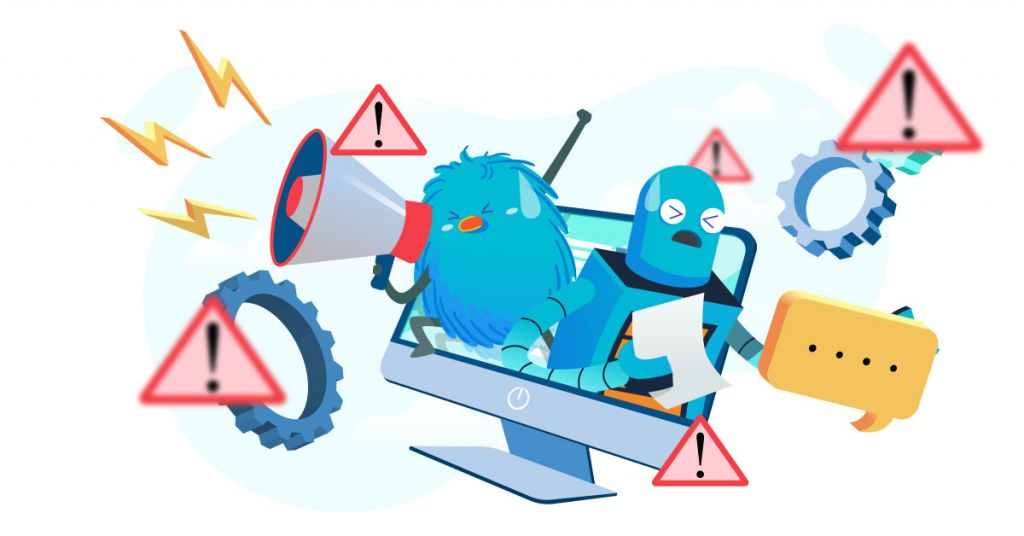
In an explainer video, the message inside is what makes up the core, and the viewer responding to the call to action (CTA) is the goal.
This is why explainer videos were created in the first place: to provide value, to inspire, and to result in a specific behavior that will eventually benefit the company.
Some of these “specific behaviors” include: signing up for trial offers. Also opting in for email newsletters, or simply starting to use your brand.
The CTA is the one element responsible for triggering these actions. It makes one of the vital components of an effective explainer video, along with a condensed message and stunning visuals. Even so, a lot of explainer videos overlook the importance of calls to action.
Today, we’re going to look at the most common mistakes that happen in an explainer video’s calls to action.
Mistake 1: Too Many Calls to Action
The call to action is the trigger for any actions you want viewers to take after watching an explainer video. However, like everything else, too many CTAs are unhealthy.
By too many, we are not necessarily referring to the quantity but the emphasis. A call to action needs to be subtle, yet clear enough to provoke an action.
Say you’re a SaaS that sells a WordPress widget. Your CTA doesn’t need to be “Buy our WordPress widget now!” Obviously, you can say that if you want, but that wouldn’t be the best option.
Your approach depends on how much the widget costs and viewers’ familiarity with it. Suggesting an immediate purchase for a brand-new product exposes you to the great risk of losing a potential buyer. You can do it by lowering their first impression from watching the explainer.
“So, how aggressive should my CTA be?”
Unfortunately, there’s no exact measure for that. Consider it carefully based on the information you have about your target audience. But, all things being equal, less tends to be more. Just getting the viewer to take that action–no matter how small–creates a positive psychological connection with that viewer.
Ultimately, the best practice is to think about your call to action to drive viewers further down the conversion funnel. It’s very common for people to think an explainer video is a portal that teleports viewers from “What the hell is this product?” to “I want to buy this product right now!”
Spoiler alert: It’s not.
An explainer video is a map that directs people toward your product. The same is true for the call to action; it’s an engine to jump-start viewers under additional parameters. You have in place, send them along on that buyer journey.
Mistake 2: Too Abruptly Done
Even if your product has a very appealing value, when and how it’s deployed can be important. Another common mistake in an explainer video’s CTA is it being “rushed down” or “thrown in” at the end.
It catches viewers by surprise, which could be a good plot twist in an entertainment video, but NOT in an explainer video.
Not only is it confusing for viewers, but the shock element is also very jarring that it might diminish the explainer’s good impression and reduce the likelihood of viewers taking action.
This analogy isn’t perfect, but imagine a call to action as a finale to a Lord of the Rings movie. It comes naturally and is expected, but it doesn’t knock off the entire experience viewers have had from the beginning of the franchise.
Mistake 3: Lack of Screen Time
Nine times out of 10, the most logically acceptable call to action is to ask viewers to visit a website (the tenth is asking them to try a free demo). Either one can get viewers to move down the funnel.
It’s a good thing.
What is NOT a good thing is the fact that most explainer videos have an extremely short on-screen time for the URL they want viewers to visit. This isn’t a good practice, especially for companies with longer website addresses. If the very first step down a sales funnel is not taken, no sales will be happening.
Mistake 4: Cheesy Sales Line
The main idea of an explainer video and its call to action is obviously to make sales. However, it is not supposed to feel that way for the viewer. The good ones don’t.
But they also do not cover the fact that they offer a quality good or service.
A call to action is not about tricking viewers into taking action by covering up what a company has to offer (which will of course come with a price). Instead, it is about how the product/service offered can solve a problem that viewers have.
Besides, most viewers are smart, and they are fully aware that you are trying to sell something, so be smart about anything that you’re trying to throw at them.
What you need to do is to make them feel that the reason they’d take such action is that it will help them and because they are the ones who want to do it, not because YOU want them to.
This has as much to do with the voice-over reading (related to the tones of the sentences) as it does with the visuals and the copy itself.
Make sure that the voice-over and visual representation of your idea can encourage viewers to take the actions you desire.
Mistake 5: Tone-Deaf Call to Action
Often, a call to action (or an explainer video script in general) seems perfect when it’s written on a piece of paper. It reads logically in your mind and fits with your brand’s overall objectives.
But, as we know, just because a script is good doesn’t mean it will be as good in execution.
Anticipating that gap between expectation and reality can be a tough task. Especially with an explainer video where you have to deal with a written script, voiceover, visuals, and other variables.
The best way to see if everything aligns is to see it with the eyes and hear it with the ears of your target audience. Technically, anyone will be able to access your video once it’s released, but the focus should be your target audience and thus it has to be enjoyable for them.
To avoid having a tone-deaf call to action, constantly think about the target audience and use them as the compass for your explainer video.
If the tone isn’t as enjoyable for them as you had hoped. Either work on the wordplay and make the CTA more enjoyable and natural or give another voice-over a shot.
That’s it for the most common call-to-action mistakes in an explainer video. There’s no such thing as the perfect explainer video. But you can get as close as possible by avoiding these mistakes when you make your explainer video.
What do you think? Have you ever seen a perfect explainer video? Tell us in the comments.

